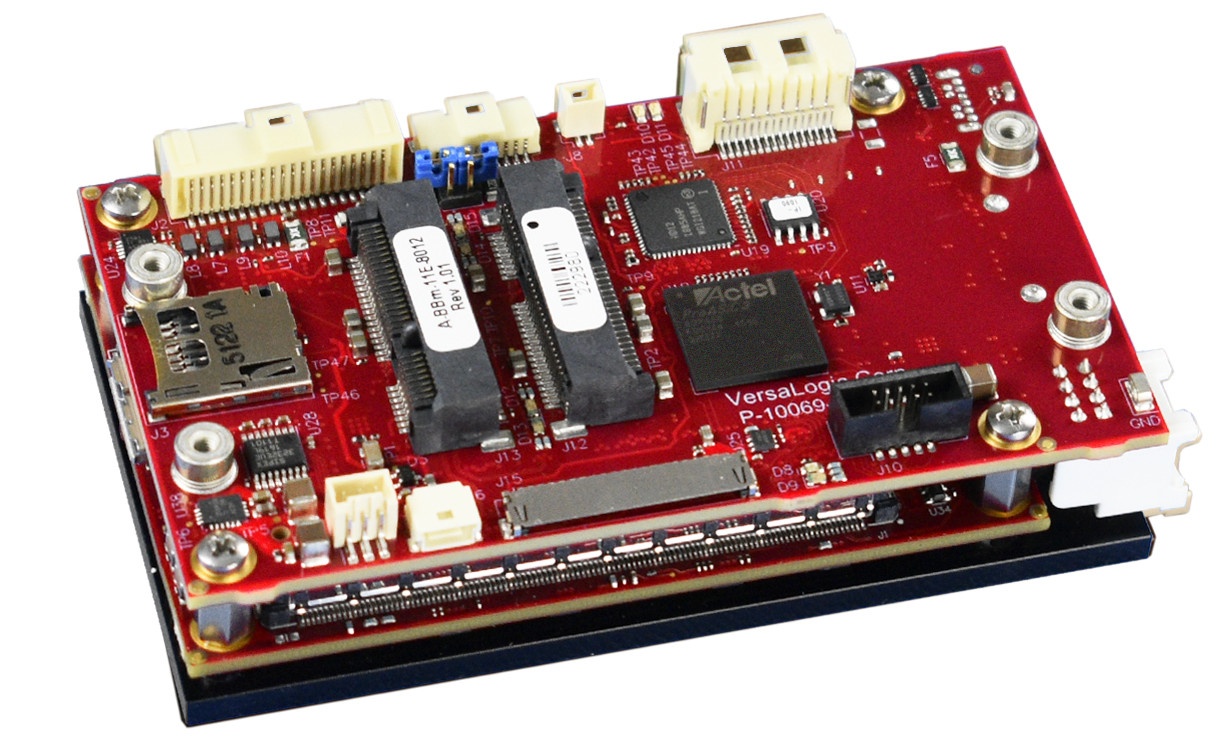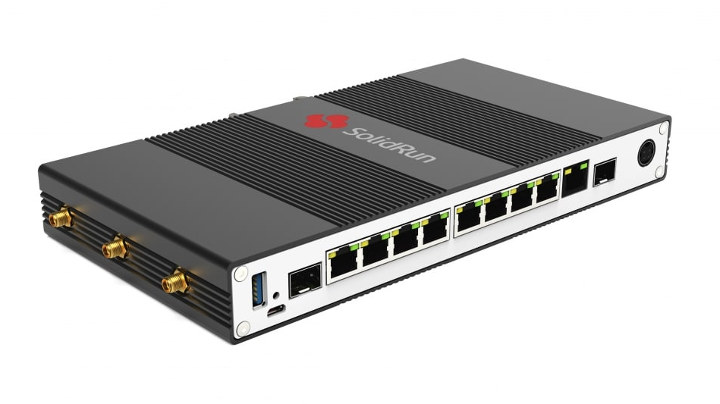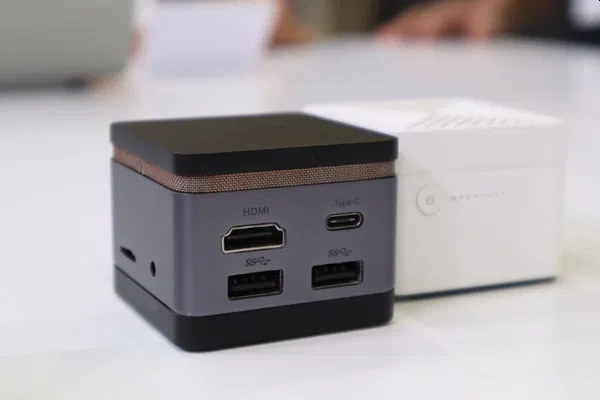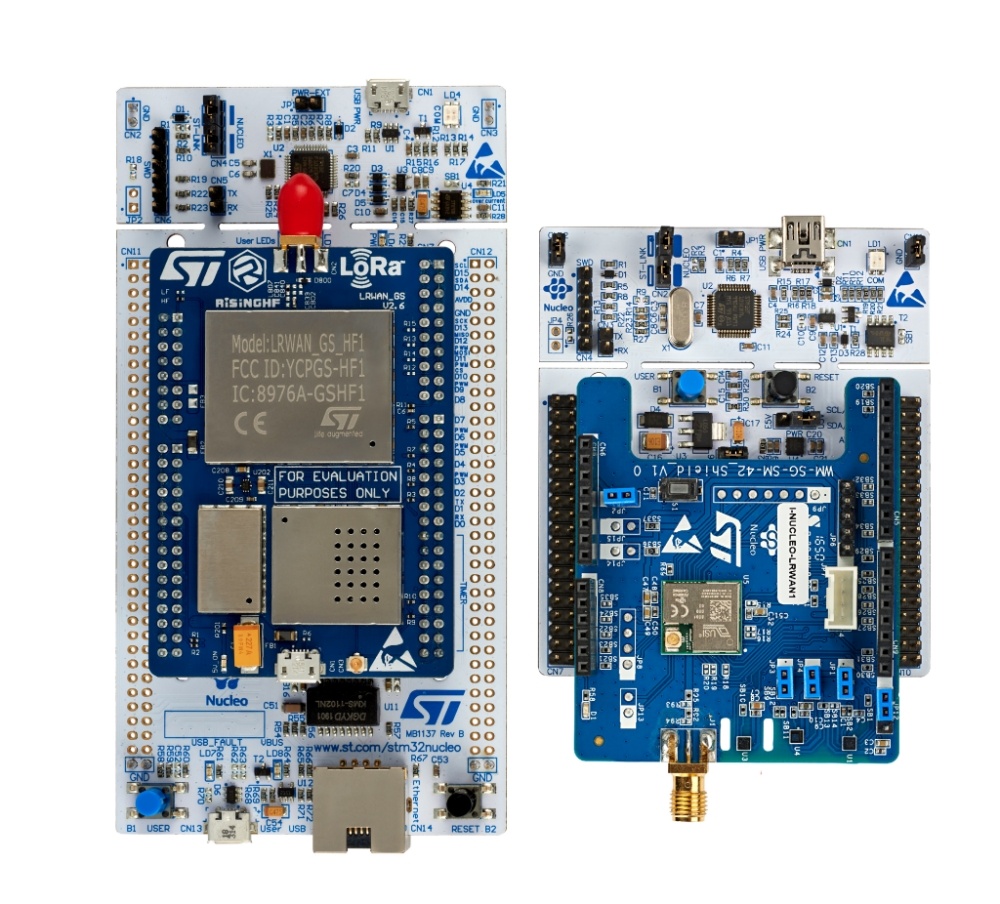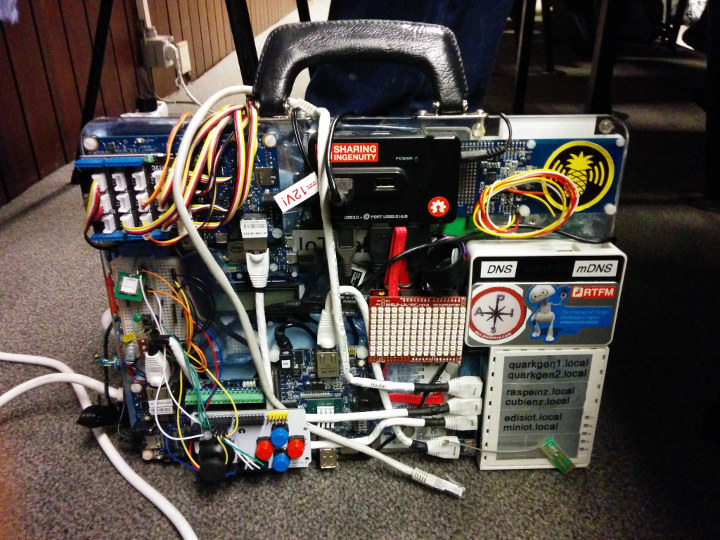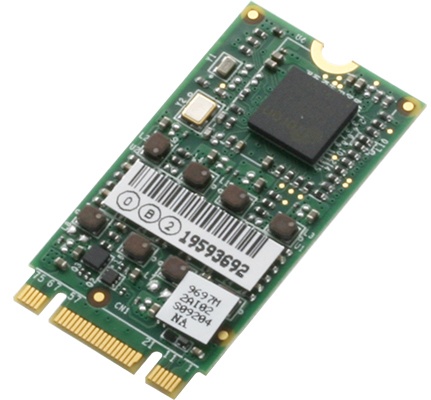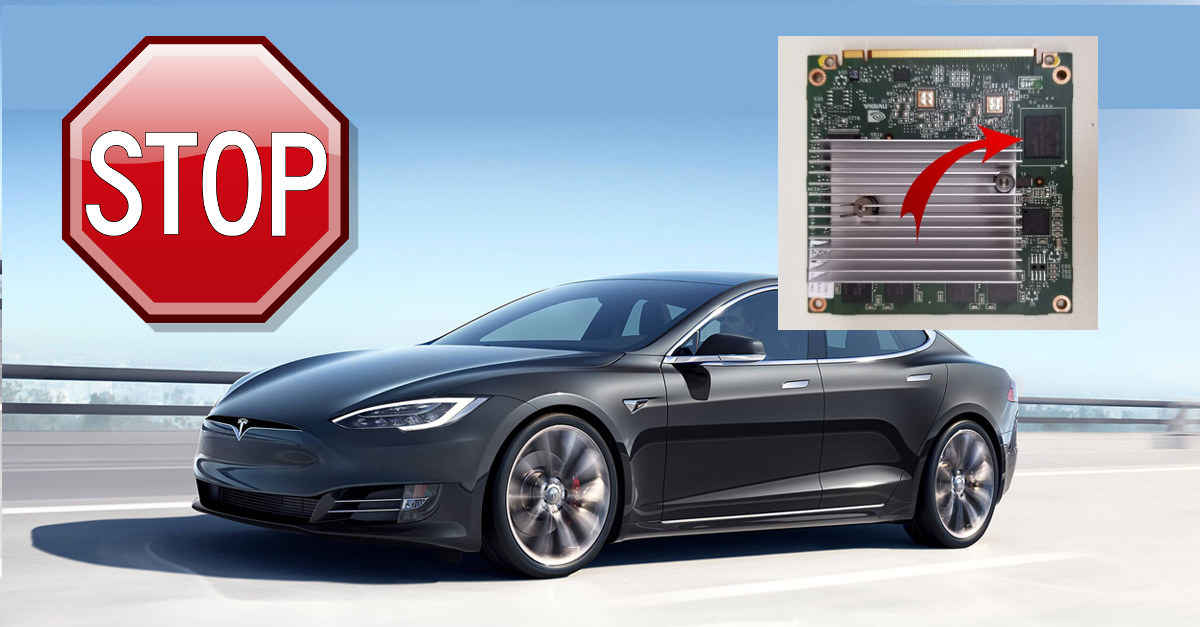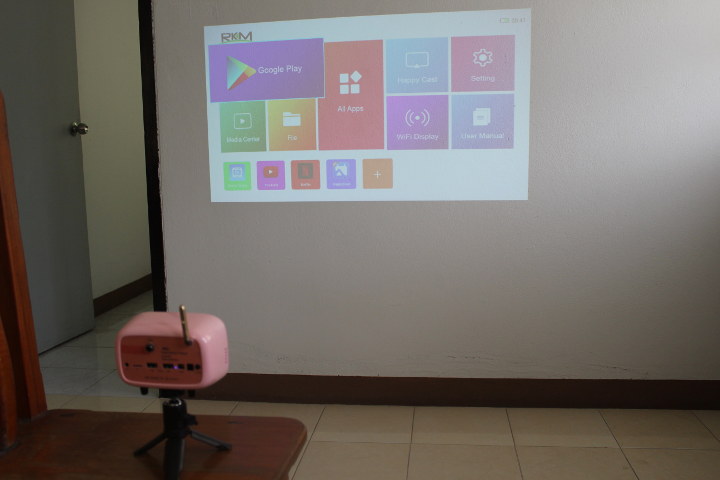Back in 2016, we wrote about VersaLogic Osprey industrial and military-grade computer based on Intel Atom Bay Trail processor, and slightly larger than a credit card. The company is now back with an upgrade with many of the same features, and the exact form factor, but VersaLogic Harrier comes with a choice of more powerful dual-core and quad-core E39xx Apollo Lake processors. VersaLogic Harrier (VL-EPU-4011) board specifications: SoC – Intel Atom E3930 dual-core @ 1.3 GHz or E3950 quad-core @ 1.6 GHz Apollo Lake processor with Intel HD Graphics 505 System Memory – 2GB or 8GB ECC-DDR3L (soldered) Storage 8GB or 32GB eMMC flash MicroSD slot SATA 2.0 port with latching connector mSATA via mini-PCIe slot Display Single-channel 18/24-bit LVDS up to 1024×768 @ 60Hz 1x mini-DisplayPort++ with HDMI and audio support up to 4096×2160 Connectivity – 2x Gigabit Ethernet ports with latching connector, network boot option on one of […]
SolidRun ClearFog GTR A385 NVR Platforms Feature Up to 8 Gigabit Ethernet PoE Ports
A Networking Video Recorder (NVR) is designed to record and playback videos from multiple IP cameras usually connected over Ethernet, and in many cases powered over Ethernet (PoE). The main purpose is for security applications allowing caretakers to monitor multiple cameras at the same time on a mosaic screen. There are plenty of turnkey NVR solutions on the market, but SoliRun, an embedded systems company known for its modules and single board computers, recently introduced the ClearFog GTR A385 family that supports up to eight PoE/PoE+ Gigabit Ethernet Ports. The ClearFog GTR A385 family currently includes two modules with GTR S4 supporting up to four cameras, and GTR L8 up to eight cameras. Specifications: SoC – Marvell ARMADA A385 dual-core Armv7 (Cortex A9 class) up to 1.3Ghz System Memory – Up to 2GB on-board DDR3L Storage – 8GB eMMC flash (default), 2x 7 pin SATA (optional replacement for 2 x […]
iLife MP8 Micro PC may be the World’s Smallest Windows 10 Mini PC
So far one of the smallest Intel mini PC was ECS Liva Q2 packing an Intel Celeron N4000/N4100 or Pentium N5000 Gemini Lake processor with up to 4GB RAM and up to 64GB eMMC flash into a 70 x 70 x 33.4 mm enclosure. iLife MP8 micro PC looks to be an even smaller, albeit taller mini PC powered by an Intel Celeron N4100 quad-core Gemini Lake processor with 4GB RAM and 64GB storage. Preliminary specifications: SoC – Intel Celeron N4100 quad-core Gemini Lake processor @ 1.10 GHz / 2.40 GHz (Burst Frequency) with Intel UHD graphics 600; 6W TDP System Memory – 4GB LPDDR3 Storage – 64GB eMMC flash. MicroSD card slot Video Output -HDMI output Audio – Headphone jack, digital audio via HDMI USB – 2x USB 3.0 ports, 1x USB Type-C power Misc – Power button Power Supply – Via USB-C port Dimensions – ~ 50 x […]
STMicroelectronics Introduces Affordable LoRa Development Packs For All User Types
STMicroelectronics has recently announced the launch of a new set of LoRa Development packs, which are not only affordable, but they are aiming to a large pool of users from big organizations, small companies, hackers, engineers, students, and hobbyists. The ready-to-use development packs are aimed for applications bent on leveraging LoRa ’s long-range, low-power wireless IoT connectivity for tracking, positioning, metering, and many related applications. STMicroelectronics is releasing the P-NUCLEO-LRWAN2 pack and P-NUCLEO-LRWAN3 pack. Both packs provide a complete LoRaWAN development kit, and they include gateways, end-nodes, and ST tools, which are all based on the STM32 Nucleo evaluation boards. The LoRa gateway on both packs is based on the STM32 Nucleo-144 development board, NUCLEO-F746ZG. The STM32 Nucleo-144 development board with STM32F746ZG MCU supports Arduino, ST Zio, and Morpho connectivity. The Gateway header pins are exposed out to facilitate more development, and they support interfacing with LoRaWAN network-server providers LORIOT, Actility, myDevices Cayenne for LoRa […]
FOSDEM 2020 IoT Devroom Call for Proposals
FOSDEM (Free & Open-source Software Developers’ European Meeting) takes place every year in Brussels, Belgium on the first weekend of February. FOSDEM 2020 is scheduled for February 1-2, and now that developer rooms have already been announced, there are calls for proposals for each topic. Benjamin Henrion (aka Zoobab), a frequent reader and commenter of CNX Software, will be in charge of the IoT devroom and has now initiated a call for proposals for Internet of Things talks. The devroom will take place on Saturday or Sunday between around 10.30 and 18:00. Each talk will last 25 minutes with a 5-minute break between talks. The talks must be about fully open source projects that cover one of the topics below: Machine-to-machine (M2M) communication on small embedded devices Distributed applications in any field of interest for autonomous/self-controlled devices, (e.g. domotics, automotive, etc) Networking: TCP/IP, mesh networking, message queuing, cross-layer solutions Real-life […]
AAEON M.2 and mPCIe Cards for AIoT Acceleration Run Kneron KL520 AI SoC
The AAEON announcement of its AI Acceleration M.2 and mini-PCIe cards AAEON uses Kneron KL520 AI SoC dual Cortex-M4 on a series of new modules that are accelerating AI edge computing and that only need 0.5 Watt of power. The modules are M.2 and mini-PCIe AI acceleration cards, that offer a new way to come at AI acceleration. What AI Features are Enhanced The cards are meant to enhance and accelerate AI functions, like gesture detection, facial and object recognition, driver behavior in such AIoT areas as access control, automation, and security. History of the AAEON Development Previously AAEON has been offering the M.2 and mini-PCIe AI core modules for the Boxer computers that are based on the Intel Movidius Myriad 2 and Myriad X Vision Processing Units (VPU). Reporting was done on these previous releases in the articles on the UP AI core mini-PCIe card and the AI Core […]
Some Tesla EV’s Control Screens Went Dark as Excessive Logging killed the eMMC Flash
Despite wear-leveling techniques, eMMC flash memories tend to wear out over time as they have limited write cycles. So we’ve seen in the past the importance of wear estimation in eMMC flash chips, and methods to limit write operation such as disabling logging when possible or write the log to RAM with log2ram in order to extend the life of flash-based storage devices. My Xiaomi A1 smartphone basically became unusable after a little over a year due to eMMC flash issues, but that was not that big of an issue since I could just get another phone and the most important data is saved in the cloud nowadays. That’s one thing when it happens to a phone, and another when it happens to your car, as some Tesla S & X owners realized when they lost access to the control screen in the car because the eMMC flash was worn […]
Rikomagic R6 Review – Part 1: Android Mini Projector’s Unboxing and First Boot
Rikomagic R6 is a mini Android projector that looks like a vintage radio, or depending on your point of view a mini vintage television. We’ve already gone through the specifications last time around, but the smart projector is based on a quad-core Rockchip processor coupled with up to 2GB RAM and 16GB storage, while the 720p projector delivers up to 70 ANSI lumens. The company has now sent me a sample for review, so in this first part of the review, I’ll show what’s in the package, and what it looks like after boot, before going through more thorough testing in the second part of the review. Rikomagic R6 Unboxing The package reads “R6 MINI Projector” and “Smart Home Theater”. I received a pink model, but the company also offer other colors. The projector’s lens is protected by a black cover. The projector feels quite heavy and indeed it weights […]


